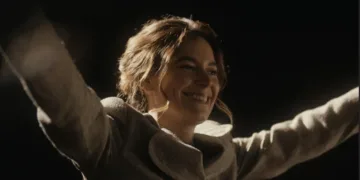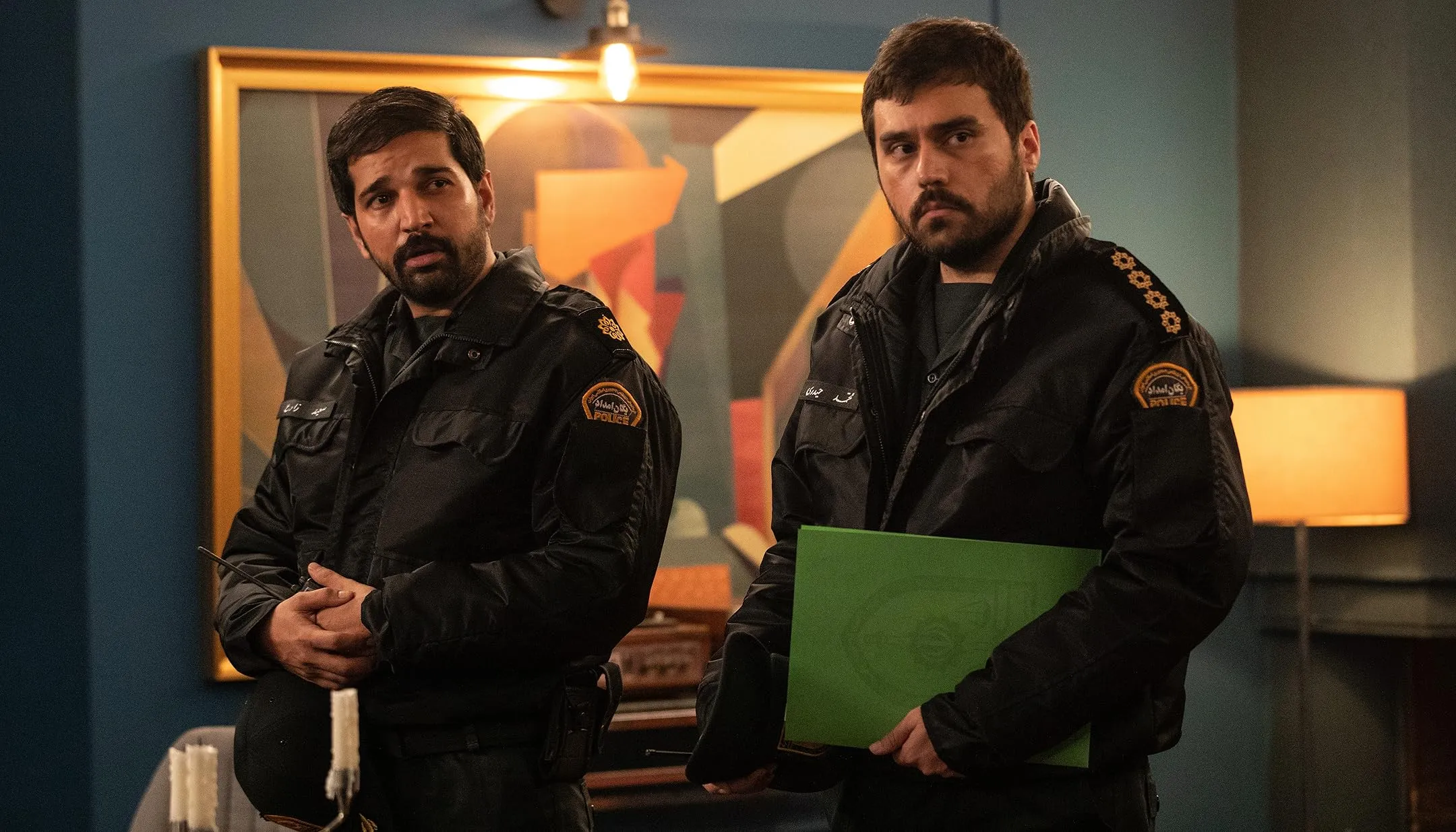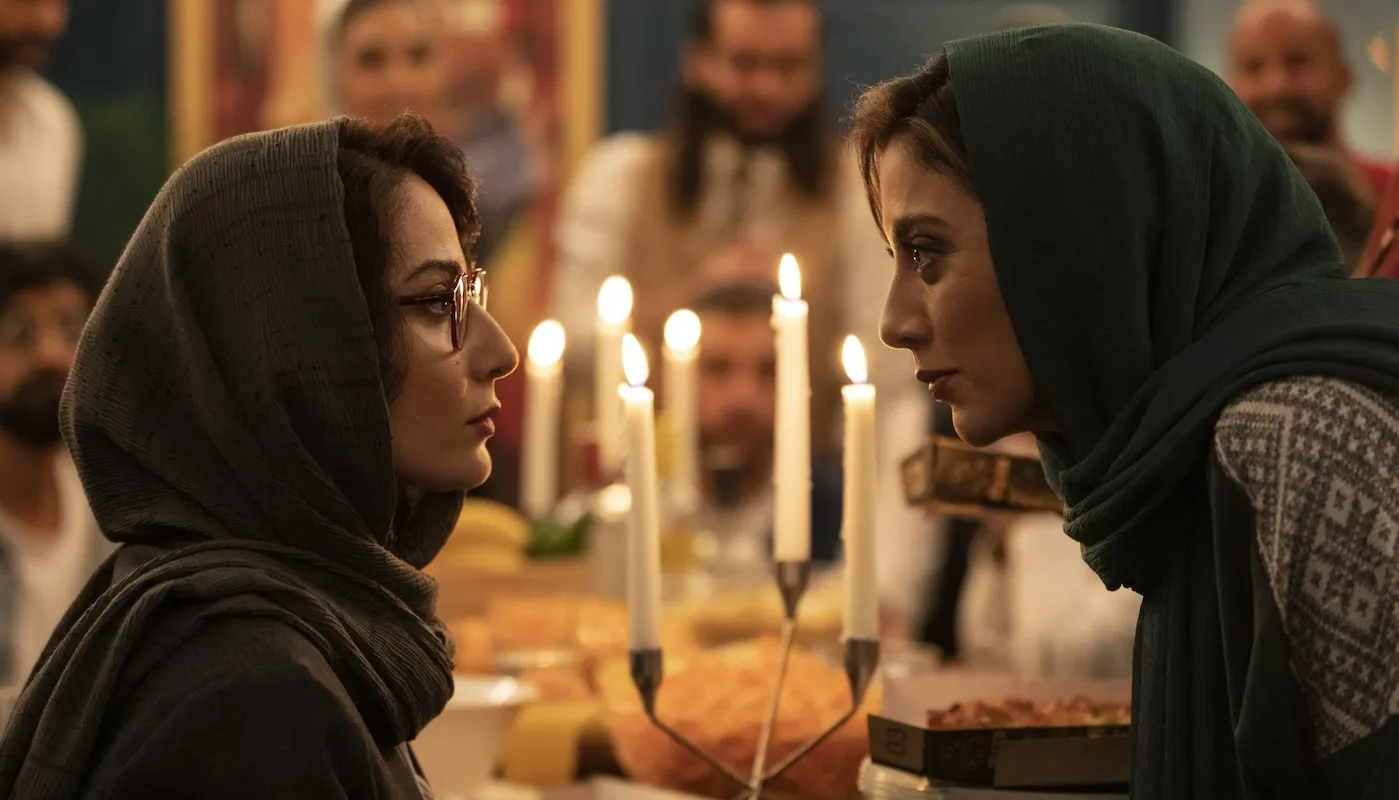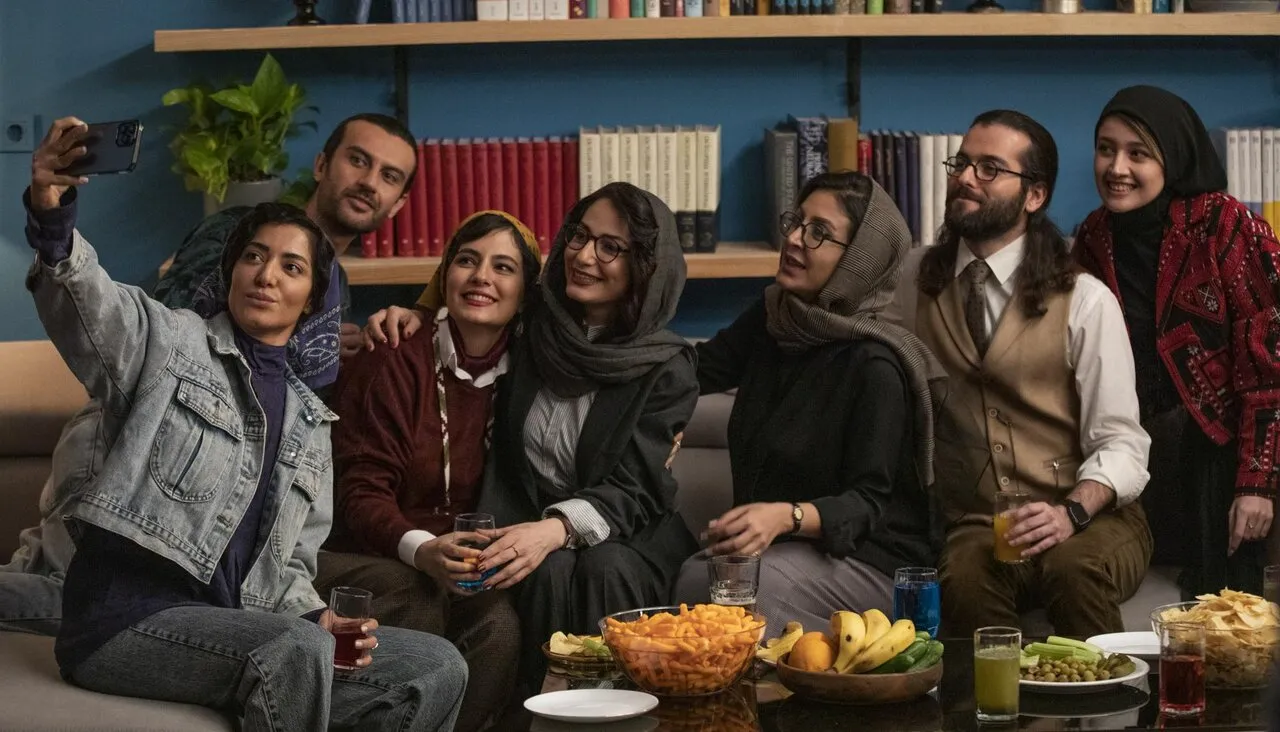In 6 in the Morning, Sara, a philosophy student, plans to leave Iran for Toronto, but a last-minute farewell party disrupts her plans. A casual gathering quickly intensifies when police arrive due to noise complaints, transforming a simple goodbye into a tense encounter.
Sara hides to avoid arrest, and the party’s small moments become a stark confrontation with state control, revealing the oppressive nature of Iranian society.
The transition from a relaxed event to a frantic scene feels abrupt yet meaningful, exposing the regime’s pervasive grip. Modiri crafts tension through strategic cuts to black, creating a sense of finality and confinement. These visual breaks intensify the film’s mood, mirroring Sara’s sense of being trapped not only in the current moment but in the broader social context she seeks to escape.
Modiri’s method builds tension gradually, elevating the stakes through moments of quiet—suggesting that the most significant threats often remain unseen, lingering just beyond perception.
In the Shadow of Decisions: The Weight of Choices and Character
Sara, the central character of 6 in the Morning, embodies complexity—nervous, indecisive, yet subtly determined. A philosophy student caught in an unexpected scenario, she struggles between staying rooted and seeking escape.
A flight to Toronto beckons, but she surrenders to a farewell party’s pressure, setting the plot in motion. Her hesitation reveals a deeper struggle between individual desire and societal constraints. Sara represents the internal conflict of a generation caught between personal aspirations and external pressures.
Her uncertainty becomes a form of quiet defiance, triggering the film’s unfolding drama. The escalation from party to police confrontation reflects the broader Iranian experience—where personal moments intersect with political realities.
Siavash, her brother, appears as an exaggerated symbol of familial support. His actions seem more plot-driven than nuanced. Other party guests emerge as background figures, their presence highlighting Sara’s central journey.
Samira Hassanpour delivers a compelling performance, capturing Sara’s internal contradictions. She portrays a character teetering between victimhood and agency, creating a complex emotional landscape. Her interpretation walks a delicate line between restraint and intensity.
The supporting characters remain intentionally sparse, serving the film’s underlying message about individual experience under political constraints. Their limited depth becomes a narrative strategy, emphasizing Sara’s isolated struggle against systemic pressures.
A Tightly Wound System: The Silent Hand of Control
6 in the Morning dissects Iranian society’s suffocating structures, where state interference permeates every corner of life. The film transforms a simple farewell party into a stark examination of power dynamics.
State control bleeds through the walls of a private gathering, revealing how personal moments can quickly become political battlegrounds. Police intervention turns an evening of friendship into a threatening encounter, exposing the thin line between private celebration and public punishment.
Sara represents a generation trapped between desire and constraint. Her hesitation speaks to a deeper paralysis—a young woman unable to navigate the restrictive social landscape. Her inability to make clear choices reflects the psychological impact of constant surveillance and societal pressure. Women like Sara exist in a world where personal autonomy becomes an act of quiet rebellion.
The film exposes the regime’s hypocritical nature through its most mundane moments. A group of friends singing together becomes a criminal act, highlighting the absurd mechanisms of control. Modiri strips away the illusion of moral righteousness, showing how the system weaponizes social norms to suppress individual expression. The police raid becomes more than an interruption—it’s a metaphor for systematic oppression that turns human connection into a potential threat.
Each character represents a different response to this suffocating environment. Friends become unwitting participants in a system that criminalizes basic human interactions. The party itself becomes a microcosm of resistance—chaotic, fragile, yet persistently alive despite constant attempts to silence it.
A Delicate Shift: Modiri’s Unlikely Dance Between Comedy and Suspense
Mehran Modiri, a prominent Iranian television comedian, explores new terrain with 6 in the Morning. The film marks his shift from comedy to thriller, blending unexpected narrative techniques.
Modiri crafts tension through unconventional scene transitions, creating a fractured temporal experience. These abrupt cuts generate an unsettling atmosphere, making viewers feel the pressure of impending threat.
Pacing becomes a critical storytelling element. Modiri understands the power of stillness, allowing scenes to simmer without overwhelming the audience. Short, silent breaks between pivotal moments create a sense of unease. Interactions build slowly, generating emotional intensity that reflects Sara’s internal struggles.
The film’s tone shifts seamlessly between humor and anxiety. What begins as an exploration of societal expectations transforms into a high-stakes encounter. Dark comedic moments emerge through Sara’s increasingly complicated situation. These instances of levity do not reduce tension; they amplify the underlying emotional landscape.
Modiri deconstructs traditional thriller expectations by introducing unexpected rhythms. Each scene becomes a psychological landscape, revealing the complex pressures facing young individuals in restrictive social environments. The narrative moves beyond simple genre conventions, creating a raw, intimate portrayal of personal and collective constraints.
Framing the Oppression: A Symphony of Sound, Sight, and Symbolism
The technical elements of 6 in the Morning intensify the film’s suffocating atmosphere. Cinematography transforms the apartment into a living entity. Modiri uses the camera as a narrative tool, not merely an observer.
Sara appears trapped within visual constraints—framed by doorways, windows, and shadowy bars. Each composition suggests her emotional and societal imprisonment. The camera becomes an active participant, closing in as she struggles against unseen pressures.
Sound creates a menacing backdrop to the unfolding drama. Subtle audio cues generate tension without revealing complete threats. A distant knock, muffled police sirens, approaching footsteps—each noise builds a sense of imminent danger. The film eschews traditional musical scoring, instead employing barely perceptible soundscapes that make viewers feel perpetually uneasy.
Art direction introduces an unexpected layer of complexity. Western-style artwork—images of Marilyn Monroe, The Girl with a Pearl Earring, Da Vinci’s sketches—populate the apartment. These elements create visual dissonance, hinting at cultural tensions.
The artwork suggests a fragmented identity, caught between traditional constraints and external influences. Their presence speaks to the internal conflict experienced by characters trapped between societal expectations and personal desires.
The visual and auditory landscape works together to create a sense of constant surveillance. Each frame, each sound becomes a reminder of the oppressive environment surrounding Sara. The technical choices strip away any illusion of personal freedom, revealing the deep psychological impact of systemic control.
The Review
6 in the Morning
6 in the Morning is a tense, thought-provoking film that grapples with the intersection of personal freedom and societal oppression. Modiri’s shift from comedy to thriller brings a fresh layer of complexity, and the technical aspects—particularly the cinematography and sound design—add to the suffocating atmosphere. However, some symbolic elements, like the Western artwork, feel somewhat forced, detracting from the otherwise sharp cultural critique. While its pacing and tension are strong, the film’s themes occasionally struggle under the weight of its own contradictions.
PROS
- Strong tension-building through cinematography and sound design.
- Thoughtful exploration of societal issues, particularly the limitations of personal freedom under authoritarian regimes.
- Modiri’s shift from comedy to thriller adds a fresh dynamic.
CONS
- Some symbolic elements, particularly the Western artwork, feel forced and disrupt the narrative tone.
- Certain characters, like Sara’s brother Siavash, are one-dimensional and lack depth.
- The transition from lighthearted moments to high-stakes drama could feel abrupt for some viewers.



















































